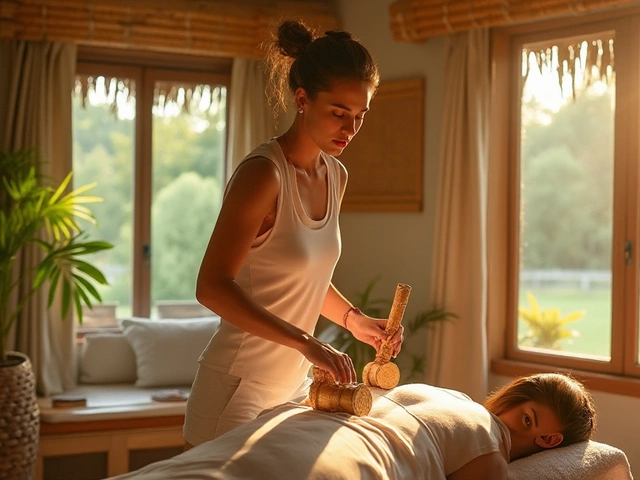Benefits of Amma Massage
Can a 30–60 minute Amma session actually cut your back pain and speed up recovery? Many people report exactly that. Amma is a focused, hands-on Japanese massage that combines pressure, stretching, and rhythmic movements to ease tight muscles and boost circulation.
If you want clear, usable benefits—less pain, better movement, faster post-workout recovery—Amma delivers. It’s not a gentle spa rub. Amma uses steady, targeted pressure along muscles and joints to release tension and restore motion. That makes it great for people who train hard, sit at a desk, or deal with stubborn muscle knots.
What Amma Massage Feels Like and Why It Works
A typical Amma session lasts 30–60 minutes. The therapist presses along muscle lines, thumbs and palms working deeply but steadily. You’ll feel pressure, some discomfort on tight spots, then relief as tension eases. Amma mixes compression, kneading, and quick rhythmic moves that stimulate blood flow and nerve signals. More blood and oxygen to sore tissue helps repair, while the nervous system calms down—so pain drops and sleep often improves.
Two quick wins people notice: immediate loosening of tight areas, and reduced muscle soreness after exercise. Unlike aggressive deep-tissue work that can leave you bruised, Amma aims to release without harsh trauma, which helps recovery happen faster.
How to Use Amma for Fitness and Back Pain
Use Amma as part of a regular routine. For athletes, a session after heavy training reduces delayed soreness and speeds return to full effort. For back pain, targeted Amma on the hips, glutes, and lower back can reduce tension that forces the spine into bad positions. Therapists often combine Amma with movement cues—simple stretches or posture tips—to keep gains after the table.
Frequency depends on need: weekly sessions help chronic issues; every 2–4 weeks keeps recovery on track for active people. If you’re in acute pain or recovering from injury, talk to your therapist and your doctor before starting. Amma can be adapted—lighter pressure or shorter sessions—so it’s safe for many people.
After a session, drink water, avoid heavy lifting for a day, and try gentle stretching to lock in the release. You might feel tender where tight knots were, but that usually fades within 24–48 hours.
Picking the right practitioner matters. Choose someone trained in Amma or Japanese-style therapeutic massage. Ask about experience with back pain or sports recovery and request a short consultation before the first session. Clear communication about pain levels and goals will get you better results faster.
Amma isn’t magic, but it’s a practical tool. If you want focused, effective work for muscle tension, faster recovery, and less back pain, try a few sessions and track how you feel. Small, steady changes add up fast.

Unlocking the Secrets of Amma Massage: What to Expect
Explore Amma massage, a traditional form of therapeutic bodywork. Learn what to expect during a session, its rich history, key benefits, and practical tips. Understand how this ancient technique can mesh with modern wellness practices.
Categories
- Health and Wellness (148)
- Alternative Therapies (86)
- Massage Therapy (40)
- Travel and Culture (15)
- Beauty and Skincare (9)
- Holistic Health (8)
- Health and Fitness (5)
- Spirituality (5)
- Other (2)
- Personal Development (2)



